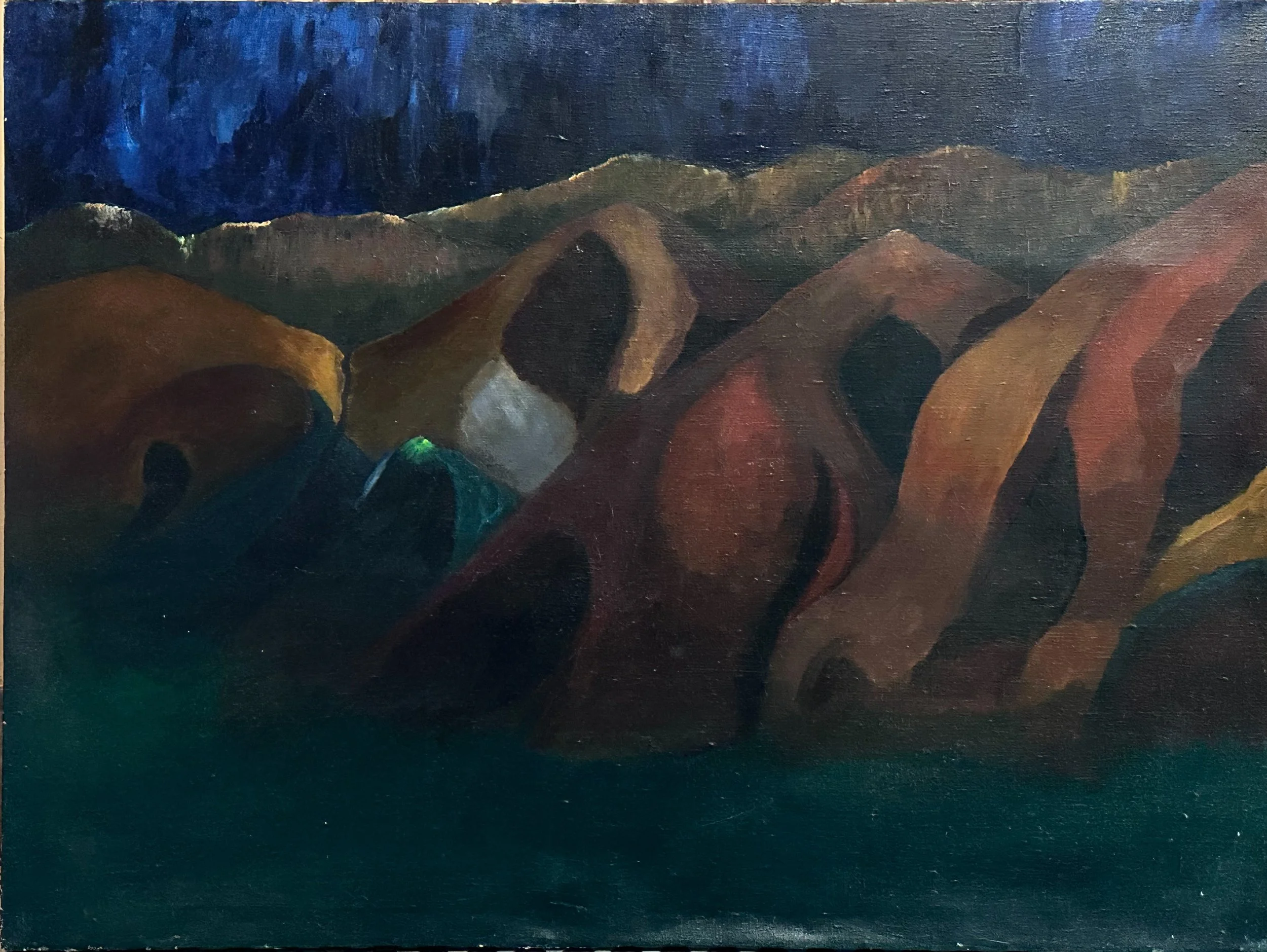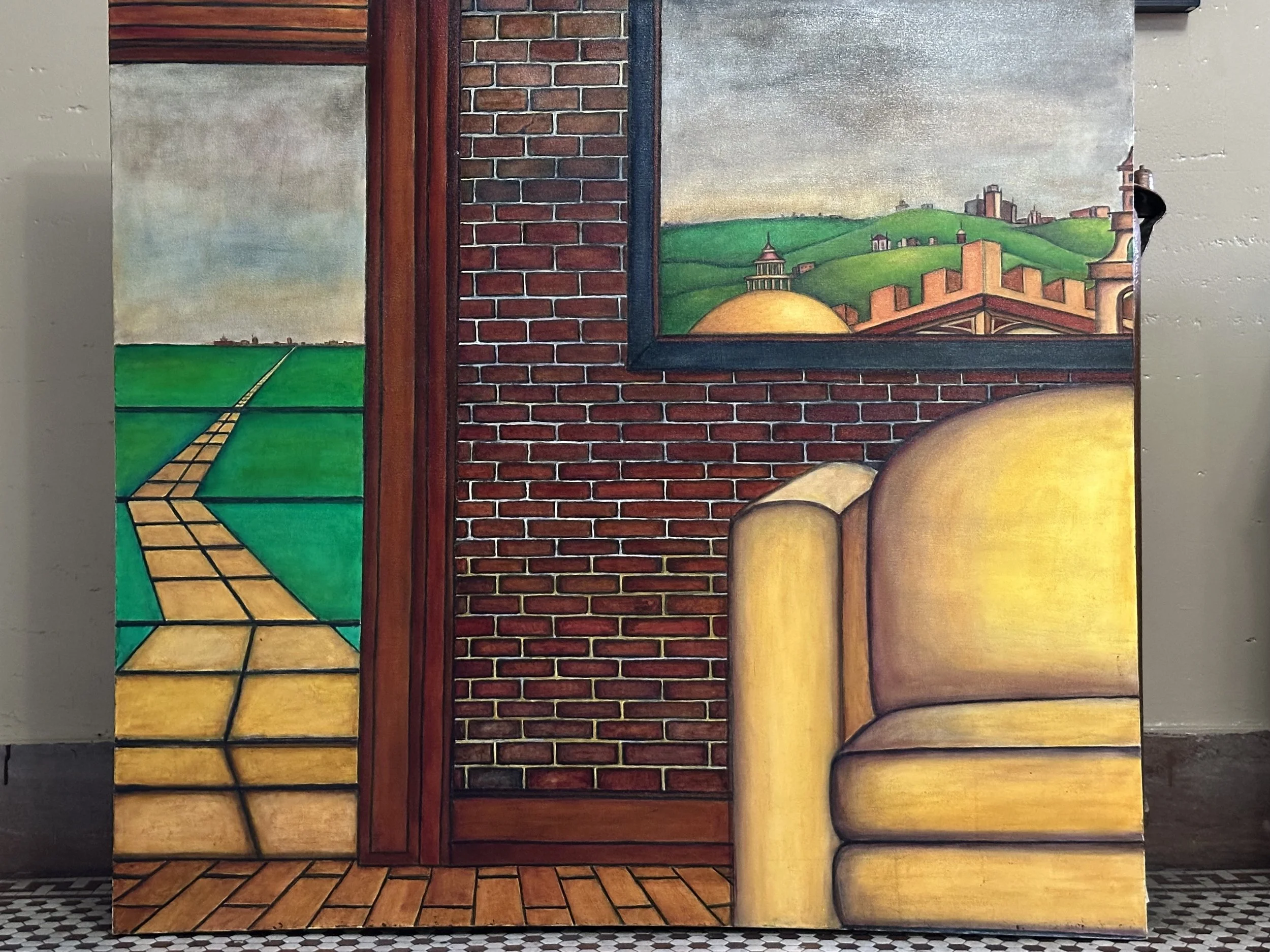Daniel McKinley
mybio.art/daniel-mckinley
instagram @Predandude
instagram @Mcdandude
Upon becoming the artist involves admitting that you are not yourself
You become something else
The discussion has been to separate the art from the artist I have come to the realization that we are two different entities
The me that is the artist
The me that is the self
I find that the person that interacts with my friends and family is a different person that I am when I am in my studio
We don’t think the same.
For me
It is recognizing the difference between the self
And the artist
They sometimes merge
When this happens people tend to think that something is wrong
That I am not myself
I used to think that they were right
Now I realize that being the artist Is something that I am.
Daniel the artist
Daniel, your practice navigates a conceptual terrain where inner and outer realities converge, often questioning the illusion of freedom within constructed environments. To what extent do you see your work as a form of spatial resistance, an act of defiance against architectural or societal confinements, and how do you reconcile this with the inherently static nature of the painted medium?
The interior and the exterior
A sense of confinement
A sense of freedom
We spend our lives in confinement, surrounded by walls.
Within this confinement we are always seeking ways to escape.
We strive to create and to make the space that we find ourselves our own.
The escape may consist of a window
A plant
Television
Or a painting
With my paintings I try to give the viewer a place to go beyond
To imagine what lies beyond
In your artist statement, you liken your process to an intimate dialogue, each brushstroke akin to a whispered word in an ongoing conversation. How do you negotiate authorship within this exchange, and at what point does the canvas begin to speak back with authority, shaping the final narrative in ways you hadn’t consciously intended?
It starts with the empty canvas.
Upon starting a new painting my approach differs significantly from most artists.
There are no preliminary sketches.
There is no plan,
I can only sit and stare
Waiting for it to speak to me
It may start with a line
A form
A shape
And then it starts to evolve
There is a push and pull
I draw
I erase
The conversation has begun
Until we both agree
And still, there are always constant changes
There have been times when have finished for the day satisfied
Only to come back the next day not satisfied and make drastic adjustments.
The painting is only finished when I find myself stuck repeating myself
When we both decide
Enough
Your work vibrates with a chromatic intensity that feels both euphoric and destabilizing. How do you approach color as a philosophical element, beyond mere aesthetic or emotional impact, and how does your palette function as a language in itself, capable of articulating notions of escape, perception, and transformation?
Don’t let the warm colors deceive you.
They are used to calm the viewer
Giving a sense of peace.
The use of cool colors are used as a subtle reminder that there is always something more
An accent to be noticed
Pay attention
You may find something
Unexpected
The oscillation between control and spontaneity in your process introduces a fascinating tension, especially in works that blur abstraction with structure. Could you speak to the role of intentional ambiguity in your visual grammar, and how uncertainty serves as both a method and message in your practice?
We are programmed to be satisfied with ourselves, and the ways that we think
Without question
I am an advocate of the concept of thinking outside of the box.
Considering what if.
The freedom to come to your own decision
I approach my work as being an open dialogue with the viewer
I encourage them to come to their own conclusions.
There is no wrong answer.
My question is,
How does this make you feel?
Your exploration of emotional landscapes feels deeply immersive, almost architectural in their spatial propositions. Have you drawn influence from fields outside the visual arts, such as phenomenology, psychogeography, or even virtual reality theory, in shaping the immersive sensibilities of your work?
We are immersed by our surroundings.
In a church, we are compelled to worship
In a stadium, we are compelled to cheer
In an office, we are compelled to work
We are shaped by our environment
Unbeknownst to us we have a feeling that this is the way
The only way
There is a sense of confinement in my paintings
There is also a sense of freedom
Giving the viewer the opportunity to use their imagination
My hope is to give the viewer
A way out.
The illusion of freedom you reference resonates strongly in our current moment, marked by digital overexposure, performative identities, and invisible systems of control. How does your work engage with or subvert these contemporary conditions, and do you consider your practice as a form of visual activism, even in its most abstracted form?
We now have a sense that being radical means that we are in control.
We are in the position to make our own decisions
Without repercussions
The impressionists broke the rules
The cubists broke the rules
The abstract expressionists broke the rules.
The difference is that these movements understood what the rules were.
We are at a place now where the the past doesn’t matter.
Art can be anything that we choose it to be.
My work cannot be categorized
My work cannot be easily defined
But I hope that my work will be able to provide questions
Many of your compositions seem to exist in a liminal state, between decay and emergence, between presence and absence. How do you conceptualize temporality within your visual vocabulary, and is there a particular philosophy or cultural reference point that informs your treatment of time and memory on the canvas?
Growth and decay
We can choose and accept who are
Or
We can choose that we can strive to be better
In my paintings there is always a place to go.
There is always an opening
We have a tendency to believe that there is no way out .
Don’t give up
There is always a way
Your insistence on leaving space for the viewer’s imagination, inviting them to construct personal narratives from your forms, echoes a broader postmodern interrogation of authorship and interpretation. How do you balance this openness with your own intentionality, and have you ever been surprised or challenged by the meanings audiences project onto your work?
We are all individuals.
My thoughts may not align with yours
I approach every painting as though I am the observer.
There is no ego.
I have no agenda to force my opinions on anyone
There is no me
The artist being a separate entity from the self
My role as an artist is to spur thought
To initiate meaningful conversation
To encourage others to imagine
I was once told that my work, with the absence of a figure
Gave them the sense of loneliness and isolation
To further the point, I can reference the statements that I have been posed during this interview .
“Your work vibrates with a chromatic intensity that feels both euphoric and destabilizing”
“Your exploration of emotional landscapes feels deeply immersive, almost architectural in their spatial propositions”
“Many of your compositions seem to exist in a liminal state, between decay and emergence, between presence and absence”
These are statements that never occurred to me while I am painting.
You have seen my work and you have come up with interpretations that I have never thought about.
It is akin to going to a therapist
With this interview I asked to rethink about
I am asked to look deeper.
I can also say that it makes me seem that I am smarter than who I am.
My challenge of being an artist is to bare your soul
To show your work
And leave everything else
To interpretation
You speak of your art as a visual escape, yet your canvases are anything but escapist in the traditional sense. They confront, complicate, and expand. In what ways do you see your work as a therapeutic or even spiritual vessel for yourself and your viewers, and what role does discomfort play in that transformative potential?
Coming to a conclusion decision is complex
There are many factors involved
You look at a work of art
You say that you like it
Or maybe not
Someone asks the question
Why?
The challenge is to look within yourself
And to discover a part of yourself that you never knew existed
The escape is to go beyond
To discover a deeper meaning
To say this is how I feel
This is what I think
Looking ahead, as you continue to probe the tensions between the cognitive and the corporeal, do you envision a shift in your practice, perhaps toward installation, sound, or digital interventions? How do you foresee the evolution of your inquiry into spatial perception and emotional resonance in an era increasingly mediated by technology and abstraction?
I have currently looking into film and photography.
I am also considering expanding my work towards instillation
I would love to see one of my paintings come to life outside the canvas










